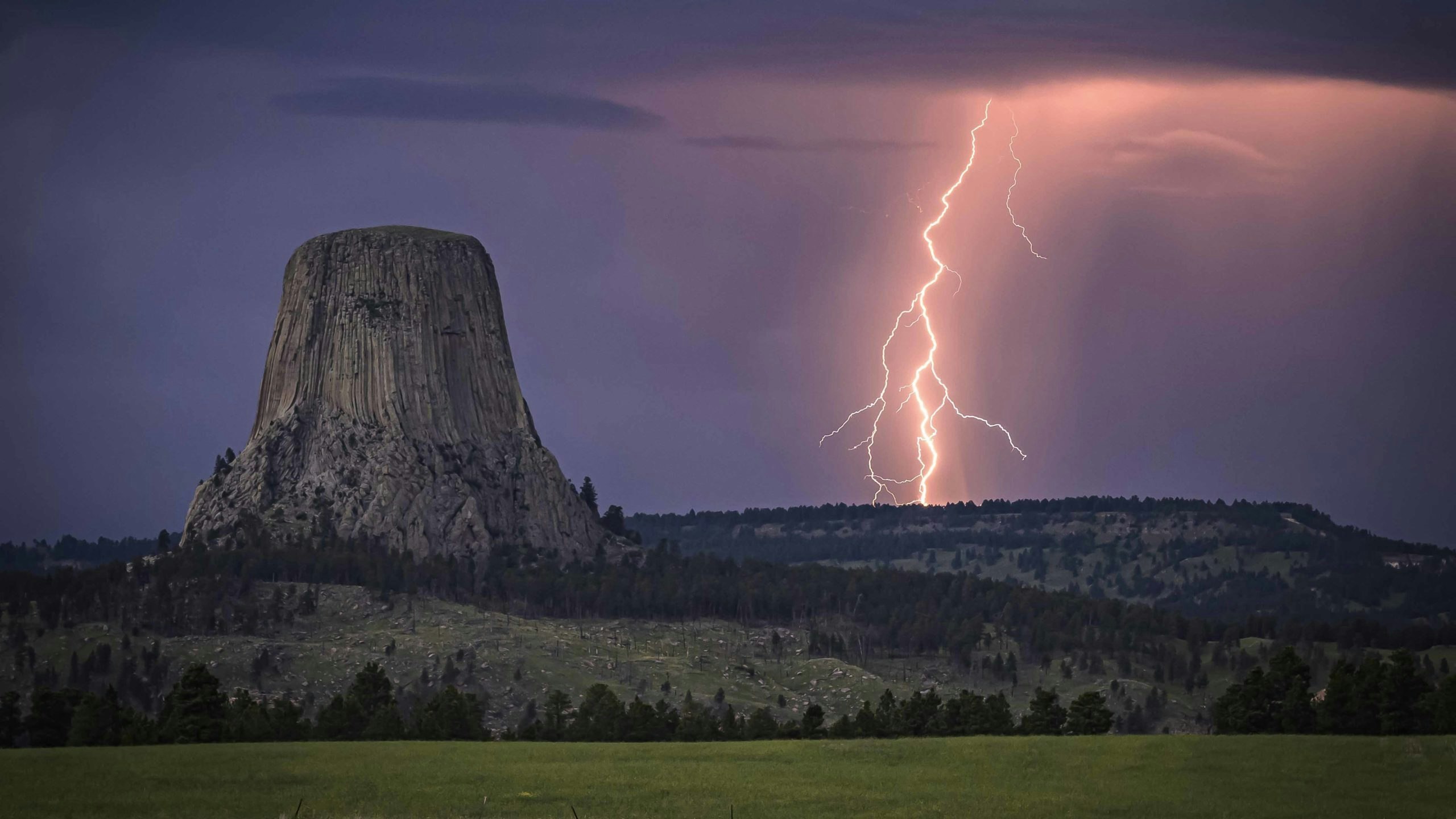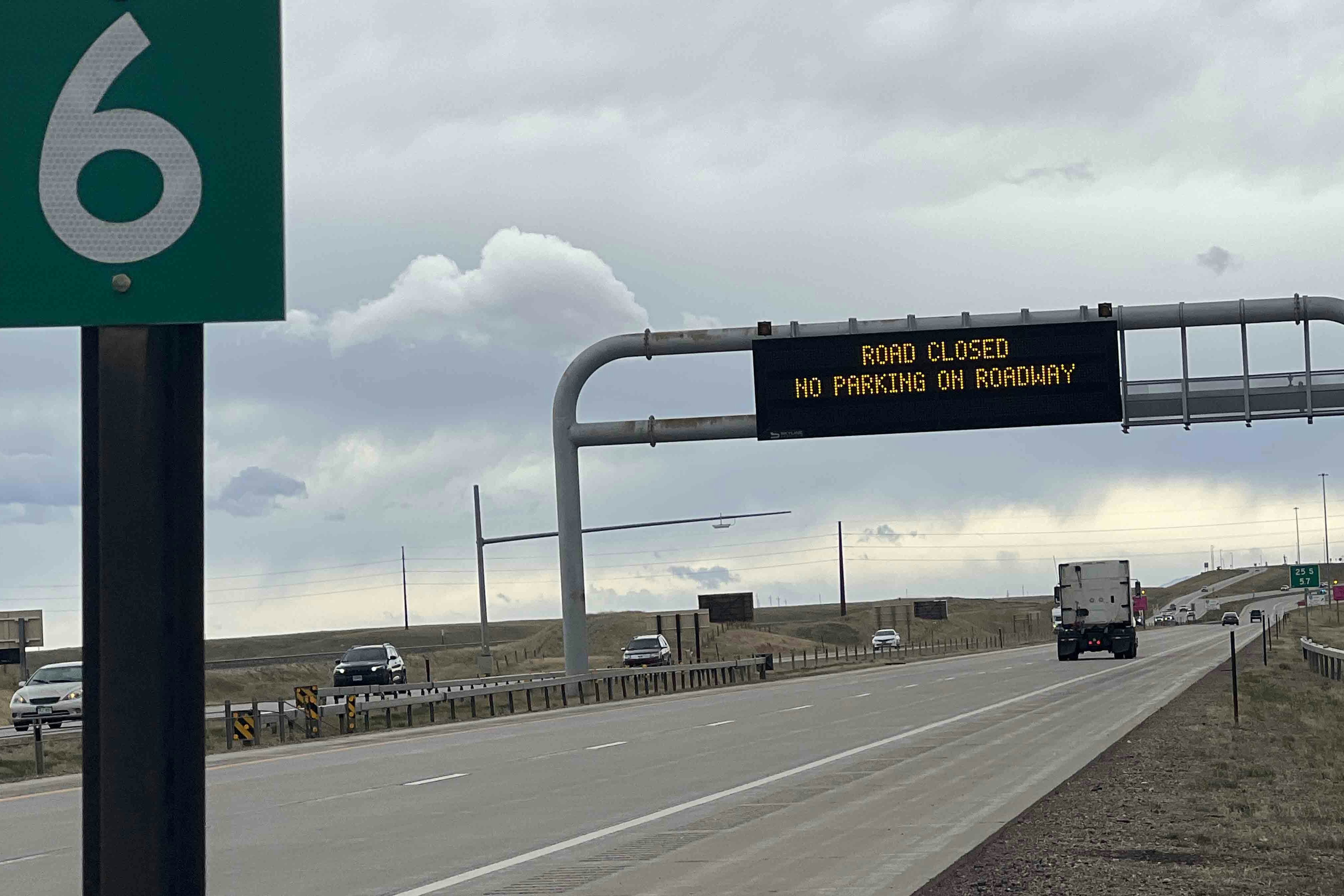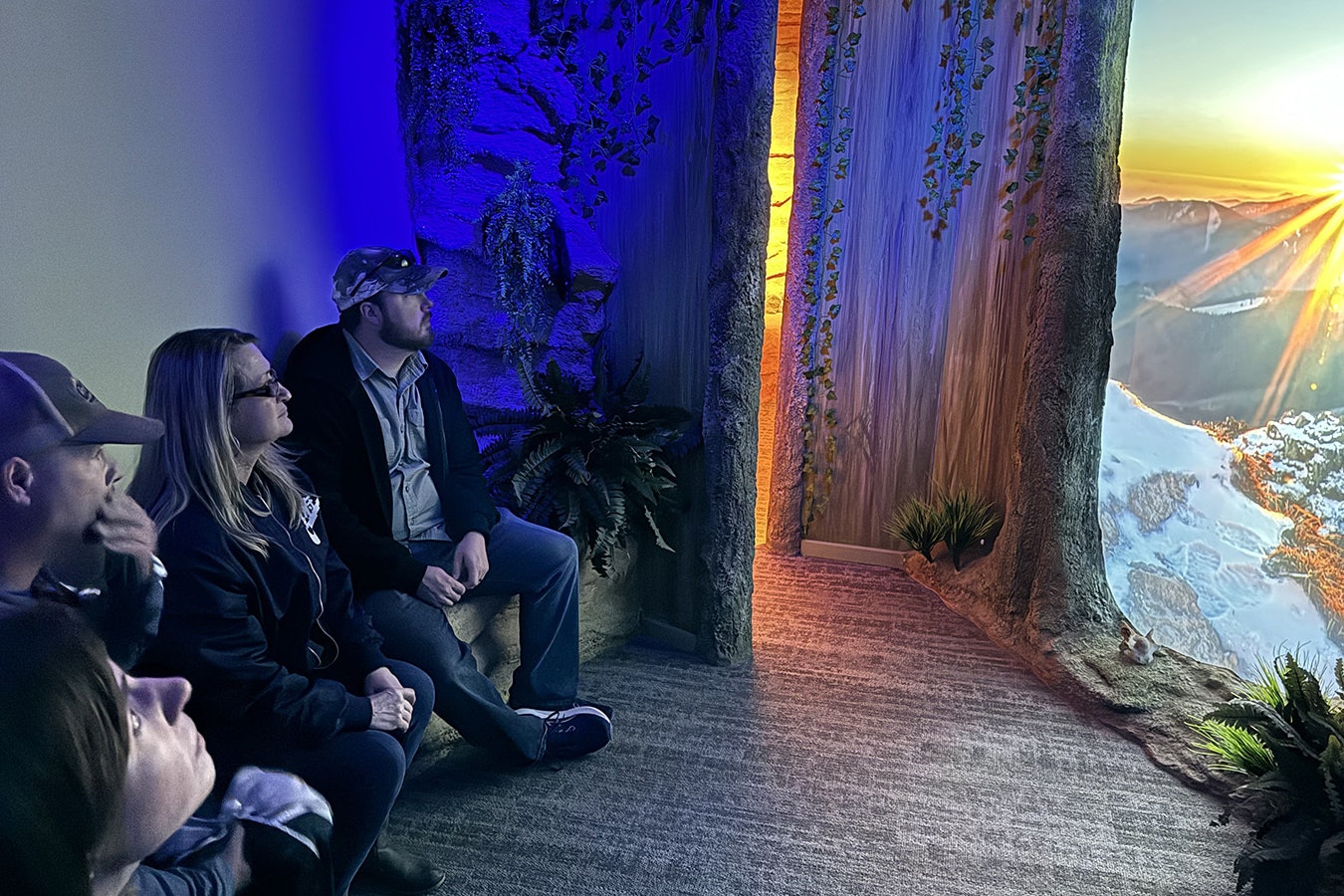One of the most recognizable geological features in the state of Wyoming is Devils Tower.
But the iconic mountain and the nation’s first national monument is not the only location in the Cowboy State that gives a nod to the underworld.
At last count, there were 22 places in Wyoming with the word “Devil” in their names (only two used twice), along with five locations in the state that include the word “Hell.”

Yellowstone and South
If one were to take a tour of the “devilish” attractions in the state, a good start would be Yellowstone National Park, where the “Devil’s Thumb” sticks out prominently near Mammoth Hot Springs. There’s also a “Devil’s Den” nearby.
Heading south, a hiking trail northwest of Jackson is called “Devil’s Staircase.” A mountain peak south of Cody is known as “Devil’s Tooth,” and a river between Meeteetse and Dubois is called “Devil’s Hole.”
“Devil’s Hole Lakes” lie between LaBarge and Cokeville. South of Kirby, there’s a ravine known as the “Devil’s Punch Bowl.” North of Dubois, there’s a mountain peak labeled “Devil’s Graveyard,” and farther southeast north of Sweetwater Station, “Devil’s Canyon” cuts through.
Then there’s “Devil’s Gap,” a mountain pass southeast of Lander.
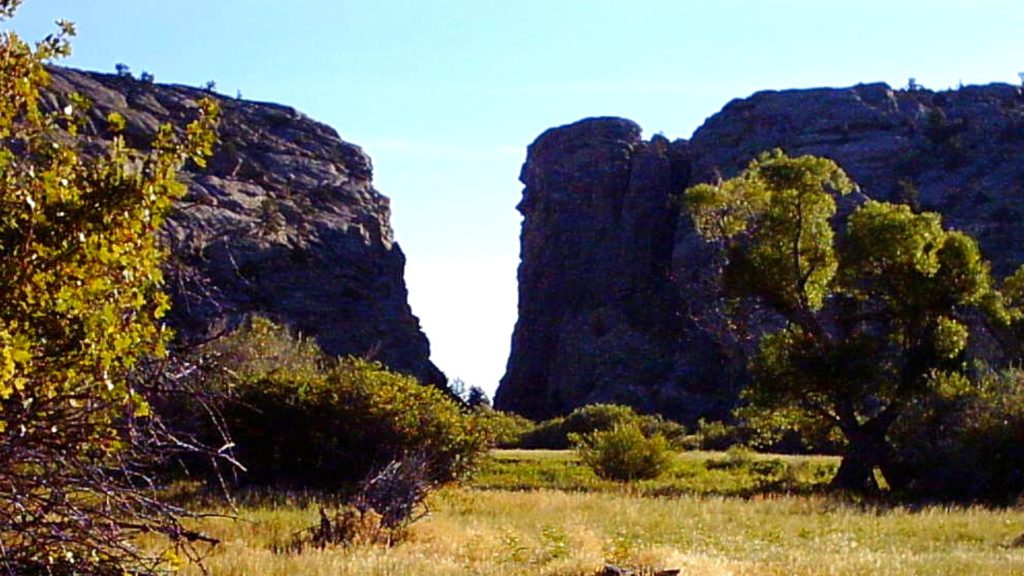
Devil’s Gate
In central Wyoming, a geological formation known as “Devil’s Gate” is located on property that for 130 years belonged to the family of Dennis Sun, publisher of the Wyoming Livestock Report.
“Geologists had told me when the chain of rocks was forming, in those rocks you’ll see some black strips,” Sun told Cowboy State Daily. “I don’t know what kind of rock it is, but it’s a lot softer than the granite. The river was probably there first, and they said it washed a groove in the rocks.”
Sun said the formation was probably named by frontiersmen traveling through the region for the first time.
But, he said, anyone who claimed they drove a wagon through Devil’s Gate was probably stretching the truth.
“It’s tough to get through,” Sun said. “I mean, you can go through it on foot. But it has to be after the first of July or when the water’s down. The sides of (the canyon) are about 300 feet.”

The Bighorns
The Bighorn Mountains have their share of devilish features. One of Wyoming’s two “Devil’s Canyons” is on private property in the far northern part of Wyoming.
Then there’s “Devil’s Slide,” a cliff in the southern Bighorns. North of Greybull, “Devil’s Kitchen” is a natural preserve. On the west slope of the Bighorns there’s “Devil’s Leap,” a steep red rock outcropping. There’s also a “Devil’s Lake” in the Bighorns as well.
Heading south, a geological feature west of Midwest called “Devil’s Monument” stands above the landscape. “Devil’s Pass” is in the Laramie Range south of Douglas. And the “Devil’s Playground” is a climbing area in Vedauwoo, a geological formation popular with rock climbers near Cheyenne.

Devil’s Playground
Photographer Dana Gage spends a lot of time at Devil’s Playground with his German shepherd, Klaus. He told Cowboy State Daily the name might have come from the imposing canyon walls made of Sherman granite.
“It has a reddish-black color to most of it and may have evoked a certain ‘dread’ to those who originally traversed the area,” said Gage.
Contrary to other geological features that carry the “devil” label, Gage said he’s found this part of Vedauwoo to be lush and full of life.
“I often come across fresh bear, elk and moose scat when I walk the trails inside the canyon carved out by the Middle Fork Crow Creek,” he said. “The creek edge is lined with berry bushes, conifers and willows. The beavers there are active and provide ponds where wildlife drink and fishes frolic.”
“Oh,” he added, “and my dog loves disturbing the serenity by jumping into them on warm summer evenings.”
But, Gage admitted, his love for the place may influence the way he sees the Devil’s Playground.
“I find it an inviting place,” he said. “One I never tire of visiting.”
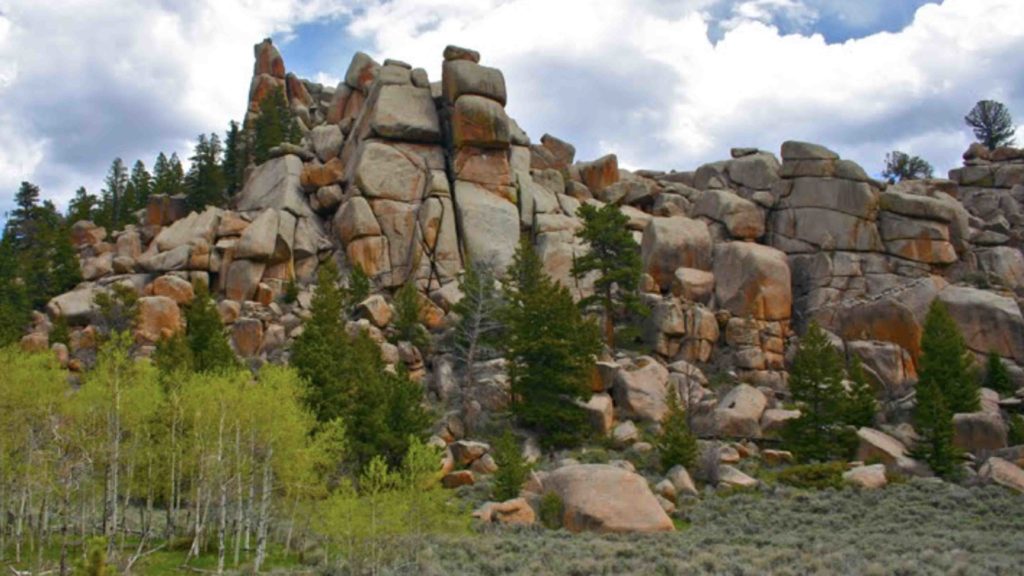
‘Satan Ate My Car‘
The evil spirits at Devil’s Playground consumed former Cheyenne resident Dan Ballinger’s truck in 1984.
Ballinger went pistol shooting in his Chevy pickup with his friends when he drove the lifted vehicle up a 30-degree incline.
Unfortunately for the group, the weather turned and within minutes they were facing a full-blown white-out blizzard.
“We parked on the incline because we couldn’t see and hiked out of there,” Ballinger said.
He said it was about 5 miles to the Buford convenience store, and about halfway there he heard the “awful groan” of his truck giving way and plunging to the bottom of the rocky abyss.
“It was a good 50-foot drop and the truck went end-over-end numerous times before crashing into some giant boulders,” he said.
The plan was to rescue the truck the following spring when everything thawed out, but that was impossible, he said.
“It laid there upside down for years,” Ballinger said. Sometime in the last decade, someone towed it out or “it just disintegrated,” he said.
As for Ballinger, he got home thanks to a forest ranger who had been caught in the same storm and felt bad for the teenagers.
“I remember he asked me where we had been,” said Ballinger.
“I told him we were at Devil’s Playground in Vedauwoo and Satan himself wasn’t dumb enough to be there right now,” he said.


Devils Tower
The most famous of the “devilish” formations in the state is Devils Tower in northeast Wyoming. Its name has been a source of controversy, however, with many advocating for a change reflecting the Native American tribes’ original label for the unique feature, “Bear Lodge.”
According to the National Park Service, when the formation was named in 1906, the label was based on a mistranslation of its Native American title.
But state Sen. Ogden Driskill, whose family has owned property at the base of the monolith for more than a century, told Cowboy State Daily believes the name was translated correctly, based on journals kept by Col. Richard Dodge from his expedition to the region in the 1870s.
“The Indian guides would not ride down in that valley where the Tower is at,” Driskill said. “They explained to Dodge that’s where the evil spirits lived.”
Driskill said that the guides believed that if they went into that valley, they would not be allowed into the happy hunting grounds. And he said there’s geological proof that native tribes avoided the monument itself.
“There’s teepee rings and Indian signs as soon as you get a few miles away from the Tower, all the way around,” said Driskill. “They have found virtually nothing at Devils Tower.”
A self-described history buff, especially when it comes to his part of Wyoming, Driskill said based on his research, he believes the name “Devils Tower” was translated correctly at the time.
“In my mind, I have no doubt that he understood, and the native guides understood very well what he was naming it,” said Driskil.
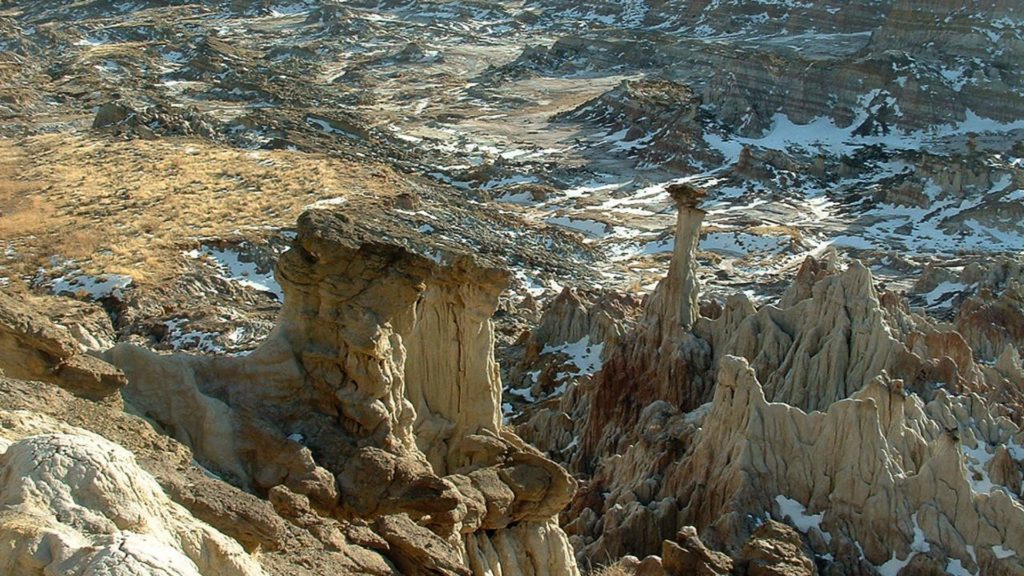
‘Hell-ish’ Landscapes
To complete this tour of underworld locations in Wyoming, there are a few more features that make the devil feel right at home.
There’s “Hell Hole” near Devils Tower;“Hell Gap” north of Hartville in eastern Wyoming; “Hell Creek” south of Saratoga; and “Hell Canyon” northeast of Baggs.
Then, of course, there’s the famous “Hell’s Half Acre,” where the sci-fi film “Starship Troopers” was filmed in the 1990s.
Might As Well Have Been Mars
Wyoming author, historian and Cowboy State Daily columnist Bill Sniffin has a theory that the many locations in the state that have earned the “devil” or “hell” moniker were most likely named by people who were unnerved by such an otherworldly landscape.
“These names were all done from around 1830 to the 1860s, during a period of time that it would seem to me that you had a relatively superstitious group of people,” said Sniffin.
“I think that they were also heading out into the unknown,” he added. “I mean, nowadays, we’re talking about people going to Mars. I think going to Wyoming in 1830 was the equivalent of going to Mars.”
Sniffin posited that the landscapes that the pioneers came across were so dramatic that the names needed to reflect that.
“What on earth could be more dramatic than the devil and hell?” Sniffin said. “This is their way to tell somebody, ‘This place must have been the Devil’s Playground, or Hell’s Half Acre, or Devil’s Gate, or Devil’s Kitchen, because only the devil could conjure up a place like this.’”

